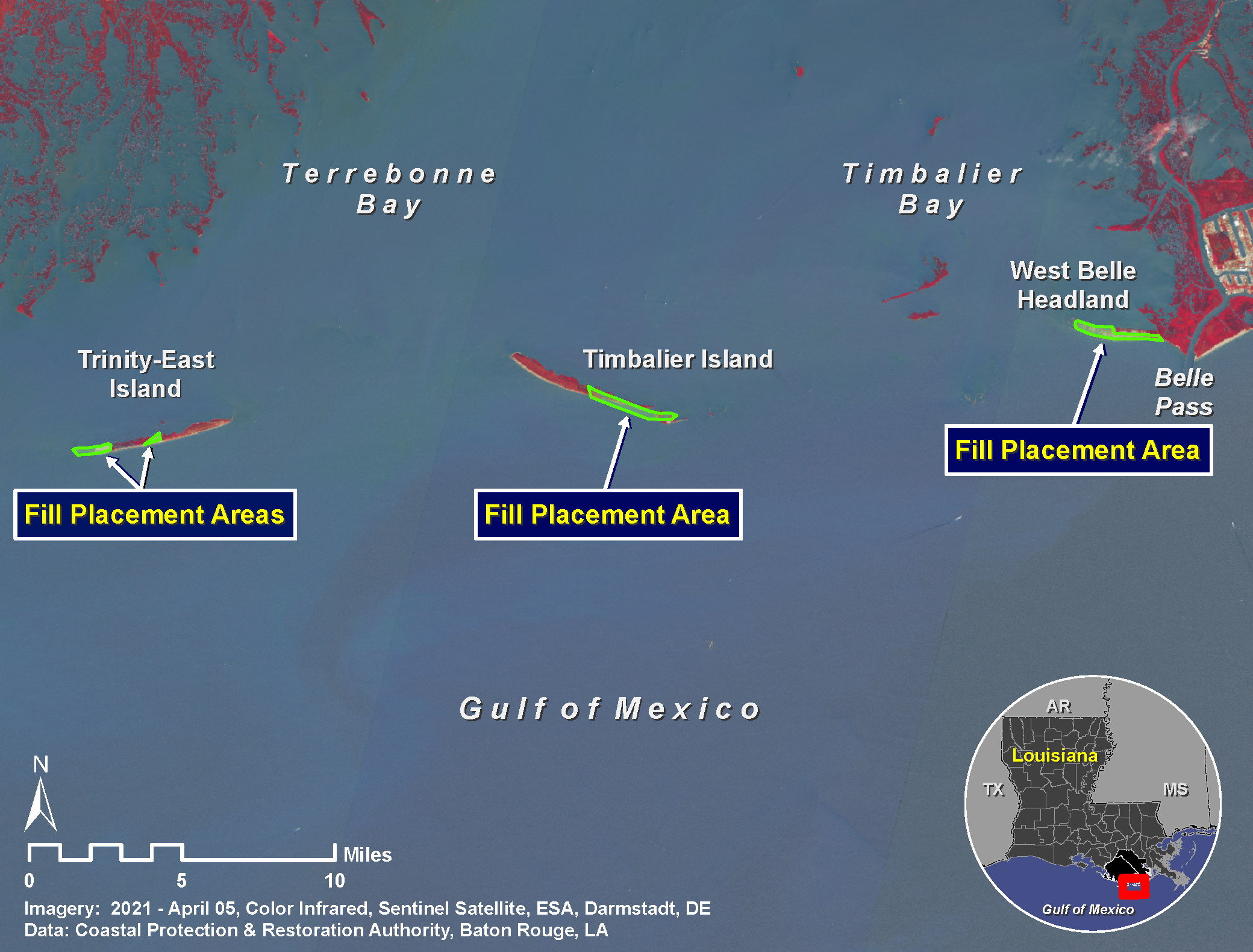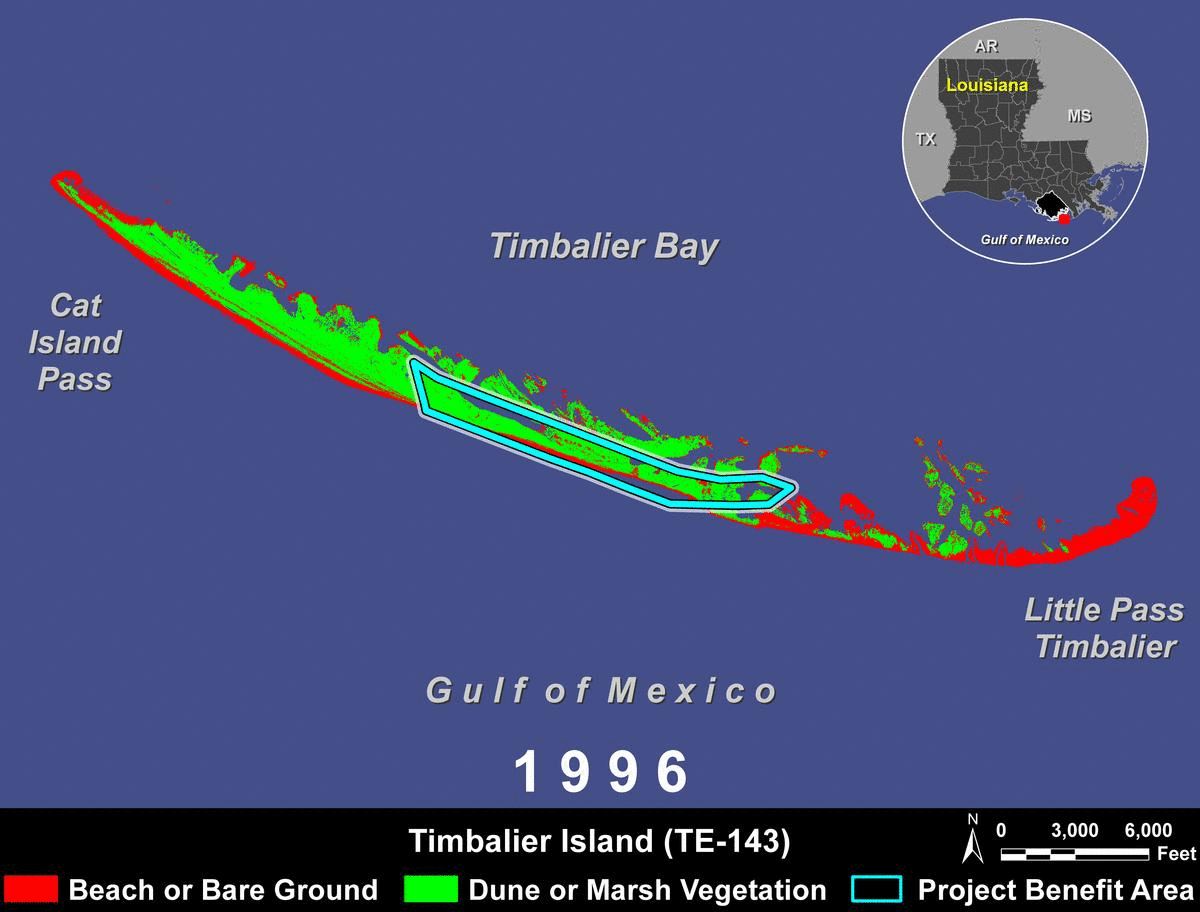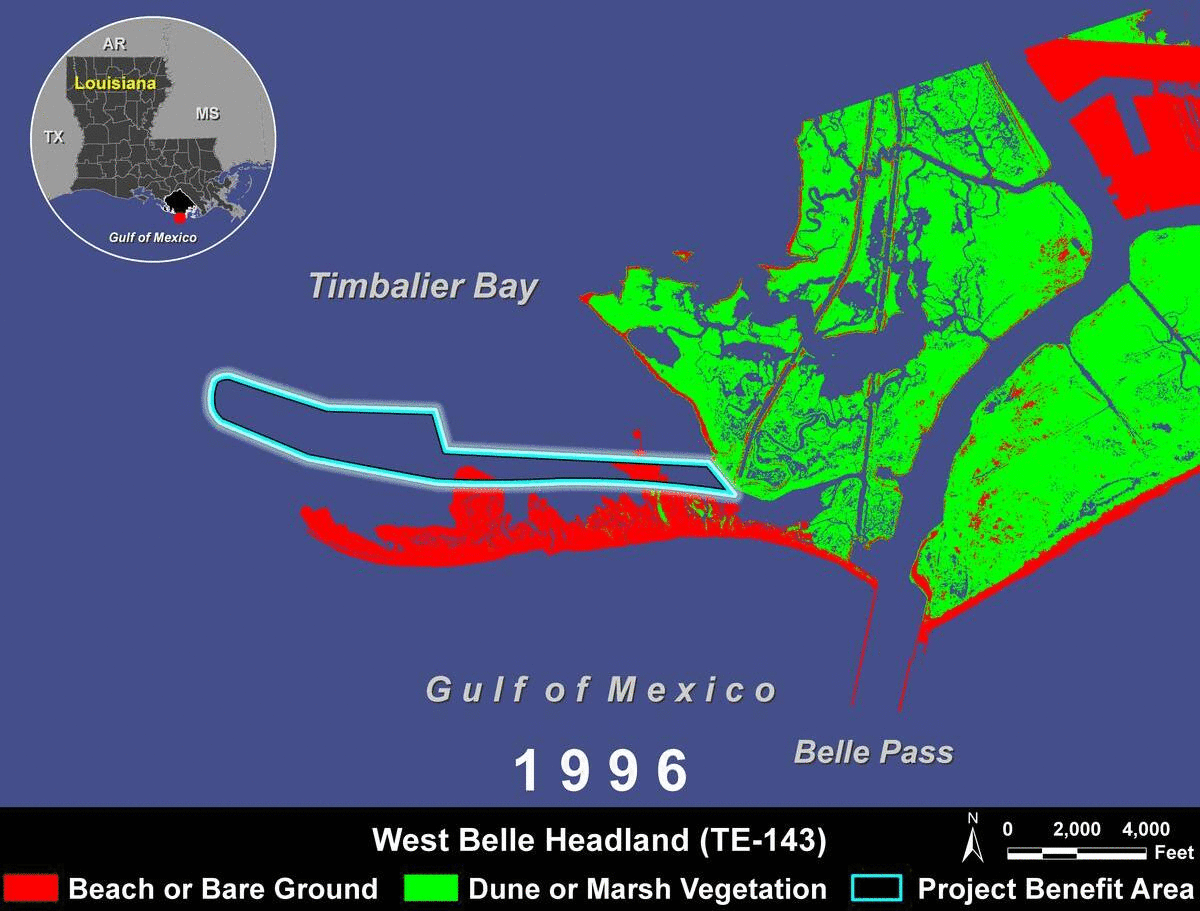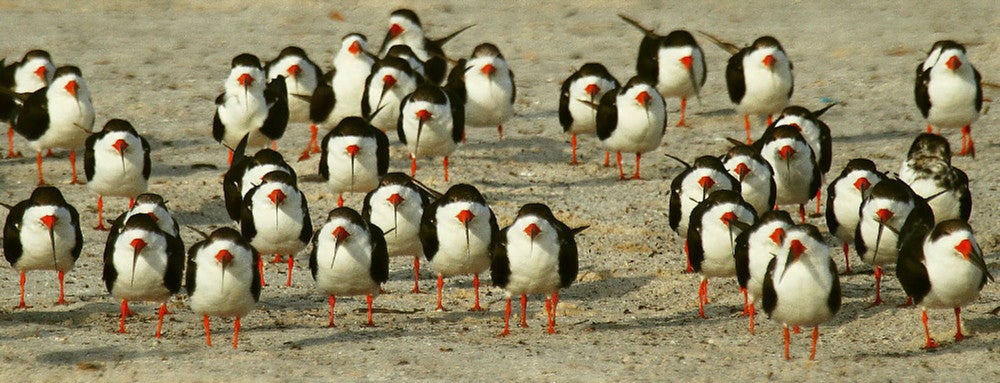Louisiana Embarks on Largest Project Yet to Keep its Barrier Islands from Disappearing
To restore Louisiana’s coast, we need a suite of large-scale restoration projects across the coast working together to deliver maximum benefits to reduce land loss, restore ecosystems, and maintain healthy and diverse habitats. In our “Restoration Project Highlights” series, we take a deeper look at specific projects from our list of Priority Projects, highlighting why they’re needed and hearing local perspectives on importance.
Louisiana’s barrier islands, remnants of ancient Mississippi River delta lobes, represent some of the most unique landscapes in coastal Louisiana. These strands of dunes and marsh serve as critical first lines of defense from storms by protecting estuarine wetlands from erosion. They also help to reduce saltwater intrusion by trapping fresh water in bays and blocking saltwater seaward.
Louisiana’s barrier islands face ever-increasing threats from sea level rise and stronger storms caused by global climate change. As a result, barrier island repair has been a keystone restoration activity over the last two decades, which has provided extra time to sustain wetlands as we work to restore hydrological function and rebuild marshes. From 2008 to 2016, the state of the Louisiana implemented 17 barrier island restoration projects across Terrebonne Bay, Barataria Bay, and the Chandeleur Islands. This resulted in a net gain of nearly 2,200 acres of land, despite facing multiple stressors and threats, including one tropical storm, one Category 1 hurricane, and one Category 2 hurricane (Enwright et al. 2020).
What is the Terrebonne Basin Barrier Island and Beach Nourishment Project?

Data from 2008 to 2016 shows that barrier islands in the Terrebonne basin have experienced faster land loss rates than other barrier island systems in Louisiana (Figure 2). To address this issue, Louisiana’s Coastal Protection and Restoration Authority (CPRA) initiated a restoration plan for East Timbalier barrier island, which was unfortunately deemed no longer sustainable for restoration. With over 100 pipelines in the vicinity of the project, the complications were already exceptionally high. Add to that severe and worsening erosion caused by various complex factors including subsidence and storm and wave action, approximately 44% of the island vanished between 2015 and 2018.
In the wake of that decision, CPRA reallocated the funding to the Terrebonne Basin Barrier Island and Beach Nourishment project (TE-0143). This project consists of three separate barrier islands: Trinity Island, Timbalier Island, and the West Belle Pass headland. Combined, this project will nourish and create over 1,300 acres of beach and dunes using upwards of $150 million in Deepwater Horizon oil spill penalties. Using these funds to invest in islands most urgently in need of restoration is a wise investment to protect estuarine function and slow the loss of wetlands in Terrebonne Bay. The project will also employ 180 people, including many from local communities, not including state and federal oversight of the project.
What Progress Has Been Made to Restore the Islands?
Construction began on West Belle Pass in May 2020, only to be interrupted multiple times during one of the busiest hurricane seasons on record. Hurricane Zeta, which hit the region just short of Category 3 in late October 2020, severely affected progress to the point of having to rethink the project’s design. Instead of pumping sand on the western side of West Belle Pass into a large constructed impoundment, which had its containment dike flattened by the storm, sand will be pumped onto the more stable eastern side of West Belle Pass. This change will allow longshore currents to carry the sediment westward to renourish and extend the headland.
The other two phases of the project are also moving forward. Trinity Island construction began in December 2020 and is now essentially complete. Timbalier Island construction started in spring 2021 and will take several months to complete.
What Does a Future Without Action Look Like?
Future with action assumes all projects in the 2017 Coastal Master Plan are operating.
Timbalier Island |
West Belle Headland |
Trinity-East Island |
 |
 |
 |
A Local’s Perspective
The barrier islands rimming the bottom of the Terrebonne and Barataria basins play a vital role in the health of the entire estuary. First, the islands decrease wind fetch which reduces energy buildup and diminishes wind speeds and wave size prior to reaching coastal communities and coastal habitats.
Barrier islands also help reduce tidal prism, or the volume of water moving in and out of the estuary. The healthier the barrier islands, the lower the volume and the slower the speed of water moving into the estuary. However, when barrier islands degrade, a larger volume of water moves through the passes and creates more erosive potential for landforms in the basin.
Finally, our barrier islands are the fuel stations for tropical migratory birds crossing the Gulf of Mexico during their spring migration north, and their fall sojourn south. Grand Isle is probably the most important of the barrier islands in this regard because it is the only existing barrier island with a maritime forest. But all of our barrier islands also provide nesting grounds for federally protected shorebirds and turtles.
– T. Bradley Keith, Director, Barataria-Terrebonne National Estuary Program
How Will This Project Benefit Wildlife?
Barrier islands aren’t just sterile speed bumps – they play an important role in providing habitat for fish and wildlife, including bird nesting islands and destinations for recreational fishing, beaching, and wildlife watching.

Likely, these projects will also be a boom for nesting birds – especially colonial seabirds like Least Terns, Black Skimmers, and Gull-billed Terns. Often after dune renourishment projects, significant increases in these species is observed, as they attempt to take advantage of nesting on elevated sand dunes. If you are on a barrier island between April and August and see nesting birds, please keep your distance. Our presence can be deadly to eggs and chicks.
Stay tuned! Many more critical barrier island, bay island, and headland restoration projects are proceeding. Construction is underway on West Grand Terre, Breton Island, Rabbit Island, and the Caminada Headland Back Barrier Marsh, and exciting developments are in the works for the Chandeleur Islands, Isle au Pitre, and many others.